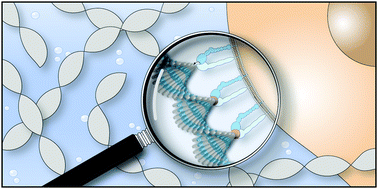Biofunctionality with a twist: the importance of molecular organisation, handedness and configuration in synthetic biomaterial design
Abstract
The building blocks of life – nucleotides, amino acids and saccharides – give rise to a large variety of components and make up the hierarchical structures found in Nature. Driven by chirality and non-covalent interactions, helical and highly organised structures are formed and the way in which they fold correlates with specific recognition and hence function. A great amount of effort is being put into mimicking these highly specialised biosystems as biomaterials for biomedical applications, ranging from drug discovery to regenerative medicine. However, as well as lacking the complexity found in Nature, their bio-activity is sometimes low and hierarchical ordering is missing or underdeveloped. Moreover, small differences in folding in natural biomolecules (e.g., caused by mutations) can have a catastrophic effect on the function they perform. In order to develop biomaterials that are more efficient in interacting with biomolecules, such as proteins, DNA and cells, we speculate that incorporating order and handedness into biomaterial design is necessary. In this review, we first focus on order and handedness found in Nature in peptides, nucleotides and saccharides, followed by selected examples of synthetic biomimetic systems based on these components that aim to capture some aspects of these ordered features. Computational simulations are very helpful in predicting atomic orientation and molecular organisation, and can provide invaluable information on how to further improve on biomaterial designs. In the last part of the review, a critical perspective is provided along with considerations that can be implemented in next-generation biomaterial designs.



 Please wait while we load your content...
Please wait while we load your content...